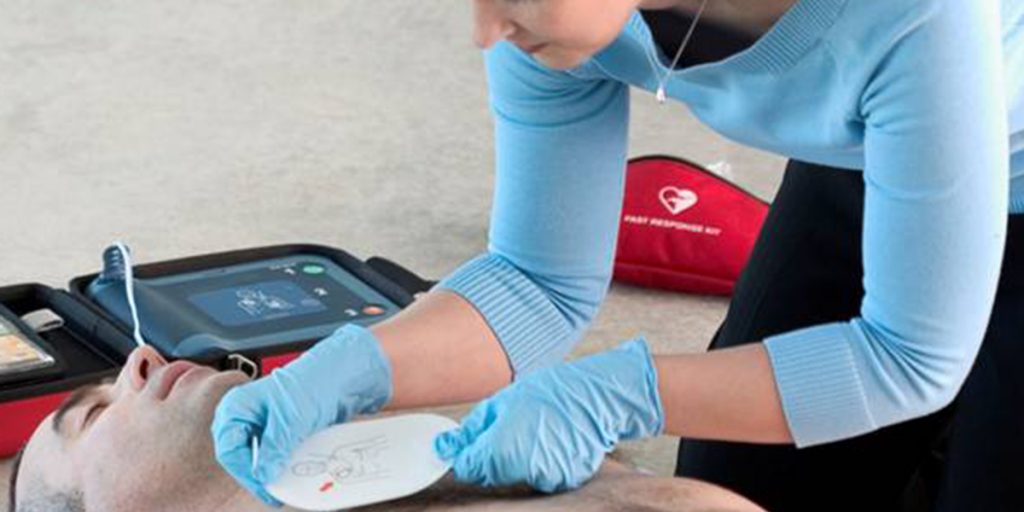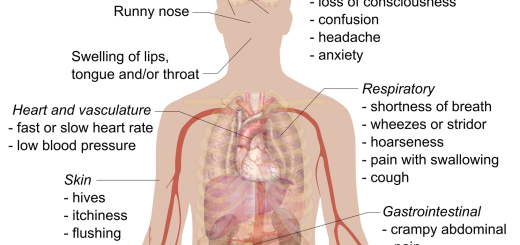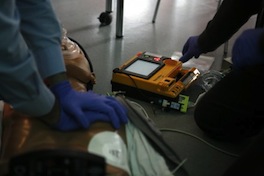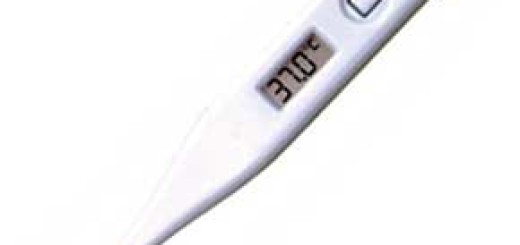The 3 Most Common AED Myths
An Automated External Defibrillator (AED) is a medical device used to help victims of sudden cardiac arrest. AEDs work by delivering an electrical shock to the heart if indicated. This clears excessive electrical activity in the heart and gives it a chance to regain a normal pumping rhythm.
Automated External Defibrillators are now commonplace in public places across the world. There is lots of evidence that the faster an AED is used, the better the chances of survival for the cardiac arrest victim.
AED familiarisation training is now included in most CPR & first aid training classes.
Let’s take a closer look at the three most common myths regarding using an AED.
AED Myth: “You need formal medical training to use an AED”
Automated External Defibrillators (AEDs) are designed to be used by rescuers with no formal medical training. The devices give verbal and visual instructions when used.
Some AEDs are now fully automated and do not require a rescuer to press any buttons in order to deliver a shock to a patient in cardiac arrest.
There is strong evidence that the quicker an AED is used, the better the chances of survival for the patient in cardiac arrest. Bystanders should feel confident to switch on an AED and follow the instructions given.
AED Myth: “You can’t use an AED if a victim has a pacemaker”
Some people are fitted with pacemakers or internal defibrillators (ICDs). These devices are often placed just underneath the collarbone and may be visible. In addition, many people wear medical alert bracelets saying they have pacemaker fitted.
An AED can still be used if a pacemaker is fitted. The only consideration is to ensure the pads of the AED are not placed directly over the pacemaker device.
AED Myth: “An AED might accidentally deliver a shock to a victim who is not in cardiac arrest”
Automated External Defibrillators (AEDs) are smart (and expensive!) pieces of medical equipment. The AED will analyze the rhythm (electrical activity) of the patient’s heart and only deliver a shock if indicated. The AED will not deliver any electricity if the patient’s heart is still beating correctly. AEDs cannot be ‘overridden’ by rescuers or be forced to deliver an electrical shock if not indicated.






